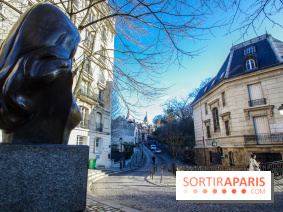Throughout the second half of the 16th century, France was marked by the Wars of Religion between Catholics and Protestants. The conflict began at the turn of the century, when a German cleric, Martin Luther, challenged the Catholic Church and established the Reformation, a revolutionary Protestant movement. These new ideas soon spread to France, but the Protestant Reformed were soon persecuted by the Catholic majority in the kingdom.
Civil wars and bloodshed ensued in France for over 30 years, from 1562 to 1598. These Wars of Religion took place under the reign of several French kings, starting with Francis I who, although a Catholic, put up no resistance to the spread of Protestantism, even going so far as to show tolerance towards practicing Protestants. But in the face of their determination, François I finally unleashed a series of persecutions in 1534 to expel the dissidents from France.
Under the reigns ofHenri II and François II, the Reformation continued to spread in France without any real repression. Catherine de Médicis, who later took over the regency of the country with her 10-year-old son Charles IX, hoped for conciliation between the two churches and signed the Edict of January, in favor of the Protestants. But the Wassy massacre in 1562 put an end to the pacification and gave rise to the first of the eight Wars of Religion .
After a first war of religion between 1562 and 1563, then a second war from 1567 to 1568, the third war of religion began in 1568 and ended on August 8, 1570 with the signing of the Edict of Peace of Saint-Germain-en-Laye by King Charles IX and Admiral Gaspard de Coligny, leader of the Protestants. The Protestants, weakened by their defeats at Jarnac and Moncontour by the troops of the Duc d'Anjou, the king's brother and future Henry III, and by the assassination in 1569 of their second leader, the Prince de Condé, appointed Henri de Navarre, future Henry IV, leader of the Protestants.
The edict, signed at the royal château of Saint-Germain-en-Laye and encouraged by Queen Catherine de Médicis, granted the Protestants new privileges and set down on paper the terms of peace between the two religious parties. In fact, the peace edict of Saint-Germain-en-Laye granted Protestants the freedom to worship in the places dedicated to them before the wars, as well as in the suburbs of 24 towns in the kingdom. It also granted them four places of safety for two years in which to worship freely - La Rochelle, Cognac, Montauban and La Charité - as well as the possibility of being admitted to public office .
Seemingly a genuine call for tolerance between the two churches, seemingly setting aside differences of belief, the edict was in reality more drafted and signed by the royal party in order to pacify and unify the kingdom, and thus lead Protestants to gradually rejoin Catholicism. However, Catherine de Médicis also ordered the marriage of her daughter Marguerite de Valois, the future Queen Margot, to the Protestant Henri de Navarre, who became King of France in 1589 under the nameHenri IV .
Despite the signing of theEdict of Toleration, tensions between Catholics and Protestants remained high. The peace was short-lived, and only two years later came the St. Bartholomew's Day massacre on August 24, 1572, the bloody climax of the clashes between the two churches.
Although fragile, theSaint-Germain-en-Laye peace edict of August 8, 1570 served as a model for subsequent treaties until the Edict of Nantes, signed in 1598 by Henri IV, put an end to the Wars of Religion in France .
More information
Iconography: Charles IX and Catherine de Médicis publishing the Peace of Saint-Germain, illumination from the manuscript Carmen de tristibus Galliae, 1577, Bibliothèque municipale de Lyon















